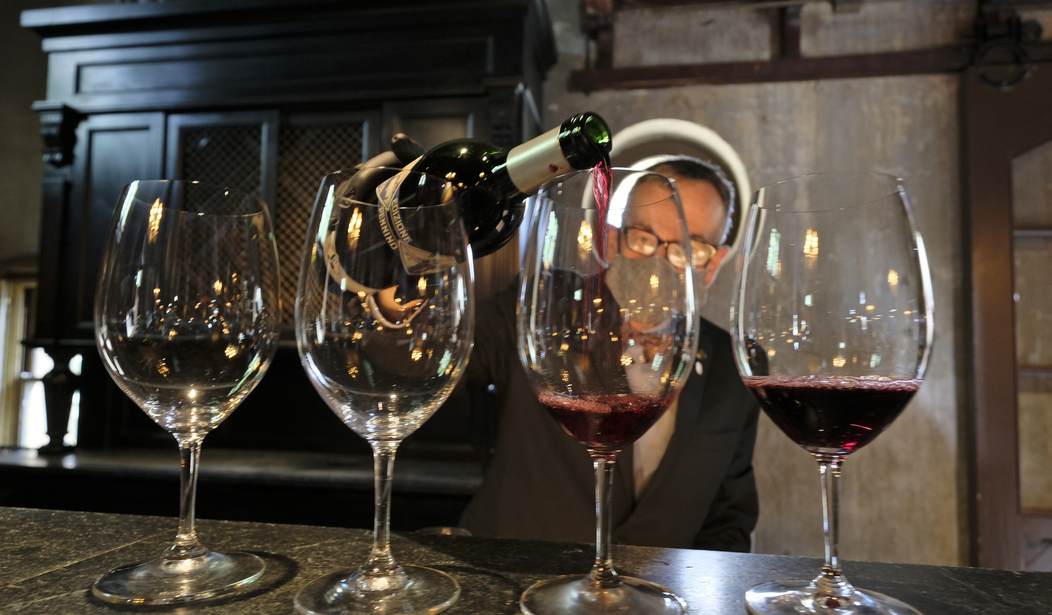The Acorn TV docuseries The Wine Show, starring the inimitable sommelier and wine merchant Joe Fattorini and a supporting cast of well-known actors, has become enormously popular. The mission was to visit wine-growing regions around the world, collect specimens of the best wines representing the particular traditions and cultures associated with each terroir and locality, and arrive at optimal pairings of vintages with appropriate dishes.
The entire theatrical display is a delight to watch, often tongue-in-cheek, self-mocking, and unfailingly good-humored. Much of what we are witnessing is plainly a scripted performance, down to the very grunts of gustatory approval, and, of course, we never meet a bad or mediocre wine. But Fattorini and his sidekicks also offer detailed instruction in the art and science of viticulture and oenology. The major element in the production involves the mystery of pairings, the marriage of a given wine and a particular serving or course. The knowledge of what goes with what is the very zenith of wine connoisseurship.
I have learned from the maestro that Pinot Noir with its light tannins goes with earthy ingredients like mushrooms and that a funky Pinot will pair exquisitely with roast chicken. A smoky Shiraz partners well with macaroni and cheese dishes, a Riesling neighbors amiably with ham, a Pinot Grigio matches a creamy béchamel, a big Cab complements braised beef with grilled veggies (a Merlot will also do), a not-too oaky Chardonnay flirts provocatively with seafood, especially crab cakes, oysters and shrimp, a Bastianich Vespa Bianco is a great fit with Osso Buco, and a Chianti Classico is a hands-down winner with baked lasagna—my own favorite Classico is the splendid 2018 Tenuta Di Arceno from the Etruscan area. I also appreciate a high Brix Tempranillo with a rack of lamb, a knockout combination that Fattorini & co. somehow missed. Of course, the extent to which such combinations are merely impressionistic is another matter.
The series clearly owes its brand of humor to the hit film Sideways—a dipsy story about wine and love’s redemption—and is obviously based on the gastronomical comedy series The Trip, featuring two British actors Steve Coogan and Rob Bryden, whose Observer-sponsored remit was to sample and write about cuisine in England, Italy, Spain and Greece. We learned nothing about food but were hugely entertained by the hilarious banter, repartee, and celebrity impressions exchanged between the two thespians, who made an excellent pairing, playing, as The Guardian’s Laura Barton writes, “augmented versions of their real-life selves” and occupying “the sweet spot between fiction and reality.” The same is true of the two Matthews (Goode and Rhys) in The Wine Show and to some extent of late addition James Purefoy (not so sure about Dominic West and Amelia Singer), who routinely engage in friendly pairing competitions.
In a recent discussion with one of my advisors at a wine emporium I regularly visit, he confided that wine and food pairings were largely an illusion, a specialists’ game unmoored from actual experience. “You go with what you like.” Indeed, as Roger Scruton lays it down in his witty and erudite faux-Descartes volume I Drink Therefore I Am, “you should drink what you like, in the quantities that you like” (with the sane proviso that “you should not, through your drinking, inflict pain on others”). One thinks of the Wiccan Rede (“An it harm none, do what ye will”) and of bibulous monk François Rabelais’ Gargantua and Pantagruel, where he describes the habit of “pantagruelizing” as “drinking to your heart’s desire.” Like poet Ernest Dowson, one calls “for madder music and for stronger wine.”
There may be considerable truth in such counsels. Aside from concern for others, there are, apparently, no actual rules. Even so, there is a temptation to regard much of life, or at least the best part of it, as a wine tasting-and-pairing festival with its own principles, guidelines, and criteria, its own de facto rules. There is something charming and inventive about the concept of pairings, or the craft and discipline of distinguishing flavors, tangs, zests, and savors as well.
I have often wondered why, for example, Scotch tasters and malt masters will inevitably link a particular Scotch with an assortment of fruit and other sometimes bizarre items that do not exist in the environment where the whiskey is produced. After all, a given single malt is more likely its own distinctive beverage. An Orkney Scotch like Highland Park may resist comparisons, as would an Islay Bunnahabhain or a Glenmorangie Nectar D’Or from the Scottish Highlands. Yet Scotch magus Michael Jackson in his Malt Whisky Companion will depict Highland Park as variously smoky, chewy, a touch woody, sappy, buttery, and honeyish, Bunnahabhain as fresh, clean, and nutty, and Glenmorangie as minty, walnut-like, and salty, with notes of butterscotch and sandalwood. My own favorite is a Macallan Double Cask Gold, with hints of dried apricot, a wink of vanilla, and a nose of toffee and caramel. Or maybe it’s sherry and bourbon laced with a tickle of pepper and an edge of grass blade. And so it goes. As fanciful as such comparisons may appear, I suppose that they, too, are pairings of a kind, if somewhat displaced.
Is there any truth to these pseudo-sophisticated detections? Are they merely subjective responses or nothing more than imaginative fabrications? Or is my palate simply not educated enough to separate out these various correlations and relationships? Hard to say. But one thing is certain: the metaphor of pairings is seductive and enjoys a wide range of application to many other fields of experience.
For example, when I consider my own practice not only as a drinker but as a poet, the technique or strategy of pairing the wine of language with the tuck of subject is paramount. To begin with, the language of poetry is clearly not the language of prose, though they have unfortunately and all too frequently been blended to the detriment of both. Poetic language or prosody comes with its own unique and settled devices, such as full rhyme, slant rhyme or internal rhyme, assonance and alliteration, meter or melodic cadence, precursor echo, aphorism, anaphora, extended imagery, and much more. As in a good wine, structure and complexity are essential.
Moreover, different idioms clearly apply to different genres of poetry. Dactylic hexameter may be suitable for epic but not for sonnets. Iambic trimeter won’t fit Wordsworth’s The Prelude. Limerick and elegy are about as compatible as rap and symphony. The pairings are mismated. The linguistic apparatus or dialect of approach must be made to fit according to mood, content, and historical categories. True, prosodic and technical surprises are always possible within certain frames of craft relevance, like Joe Fattorini introducing a potent red with mackerel or a Brazilian white with a gnocchi dish when a classic Douro would have been the expected thing. But on the whole, language and subject must pair appropriately; exceptions, though possible, are rigorously controlled.
In any event, the pleasure of wine is also the pleasure of seeing things in a new way, of enhancing things that we know and refining our perceptions. There is much to learn from the parallels of wine and food, and from Scotch as well with its far-flung comparative kindreds. Taste is highly personal and pairings may be metaphorical. At the same time, the mystery of wine and its analogical intimacies is deeply rooted in human experience, hitting that sweet spot between fiction and reality.
Elements of taste and aptness of combinations are what Scruton in his subtitled “philosopher’s guide to wine” calls “virtuous products, in which honest labour and the love of life have been distilled for your benefit.” It is the art of learning “what to drink with what” (the title of his concluding chapter). The trope is on point. He calls this, citing C.S. Lewis, the “gift-love,” the pairing of spirit and flesh, of mind and heart, of man and woman. When I think of my wife Janice, which happens often, it seems to me we make a pretty good pairing, her buoyancy, grace, and sharp intelligence balanced by my impulsiveness, klutziness, and extravagant indulgences. She says I make her laugh. I say she keeps me honest. So whether in wine, literature, or love, there may indeed be some sense to the notion of implicit rules and the general concept of appropriate pairings.










Join the conversation as a VIP Member